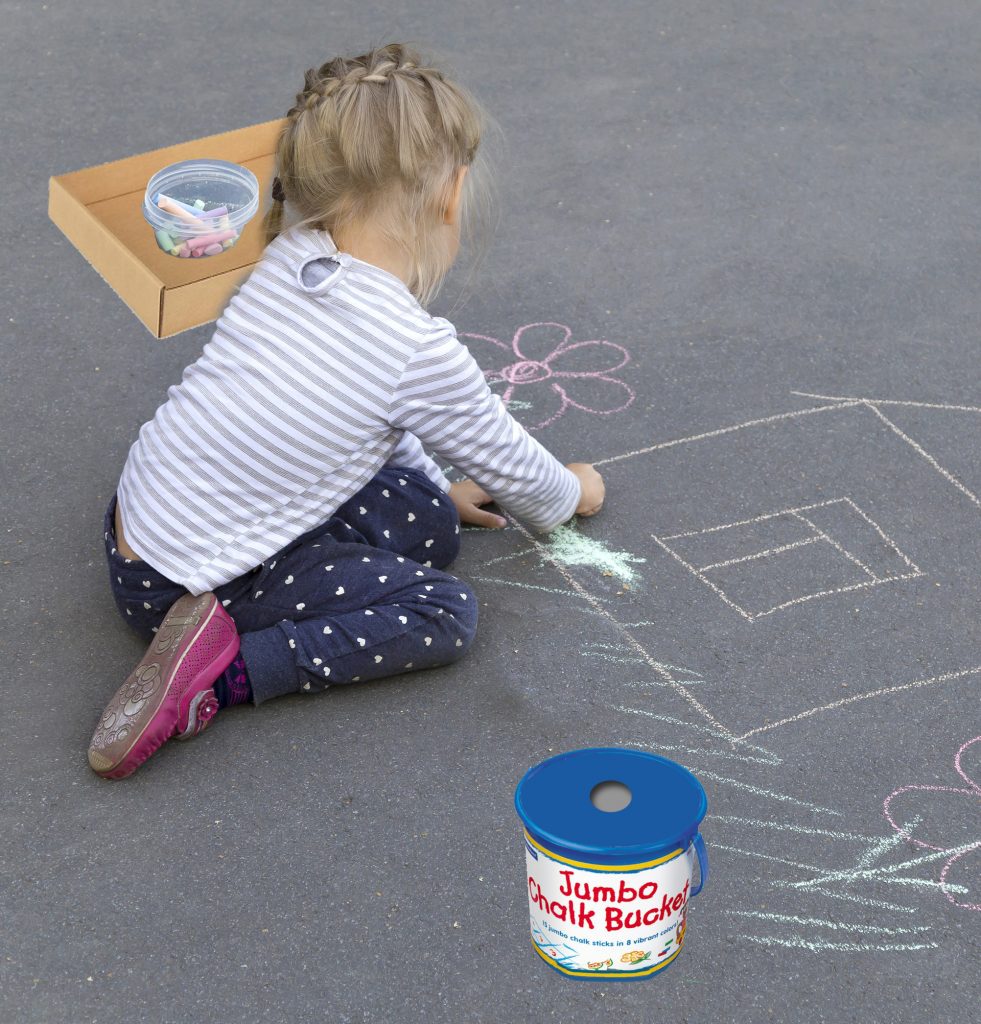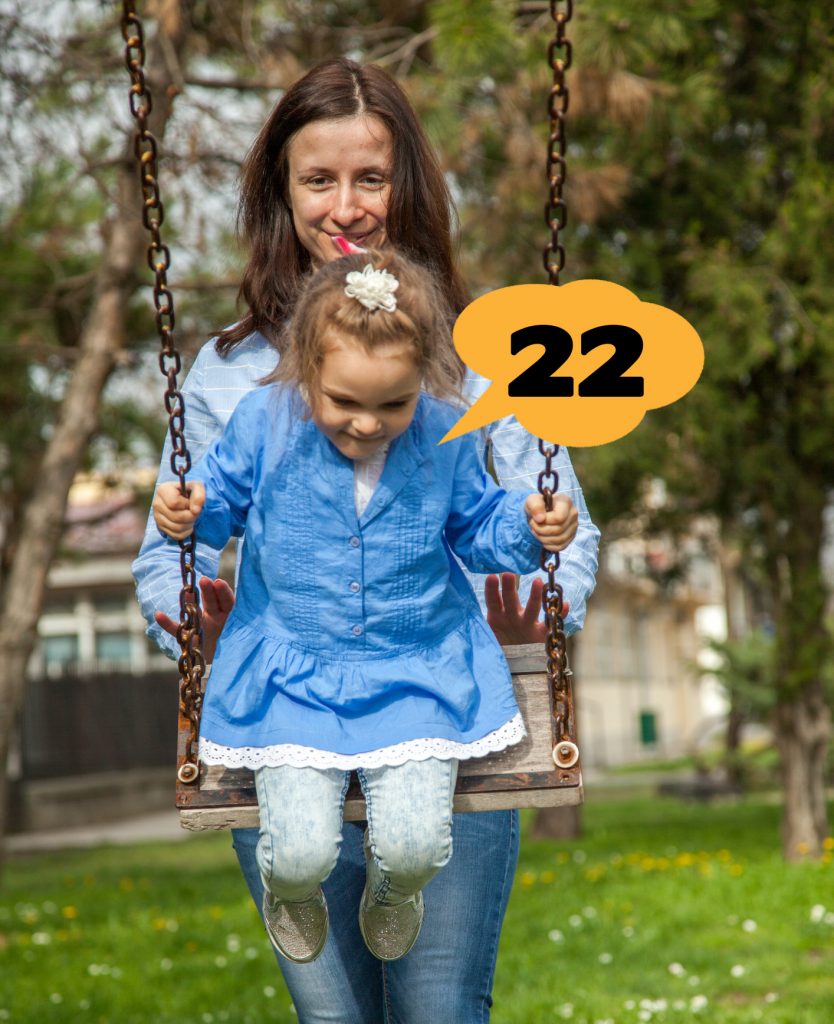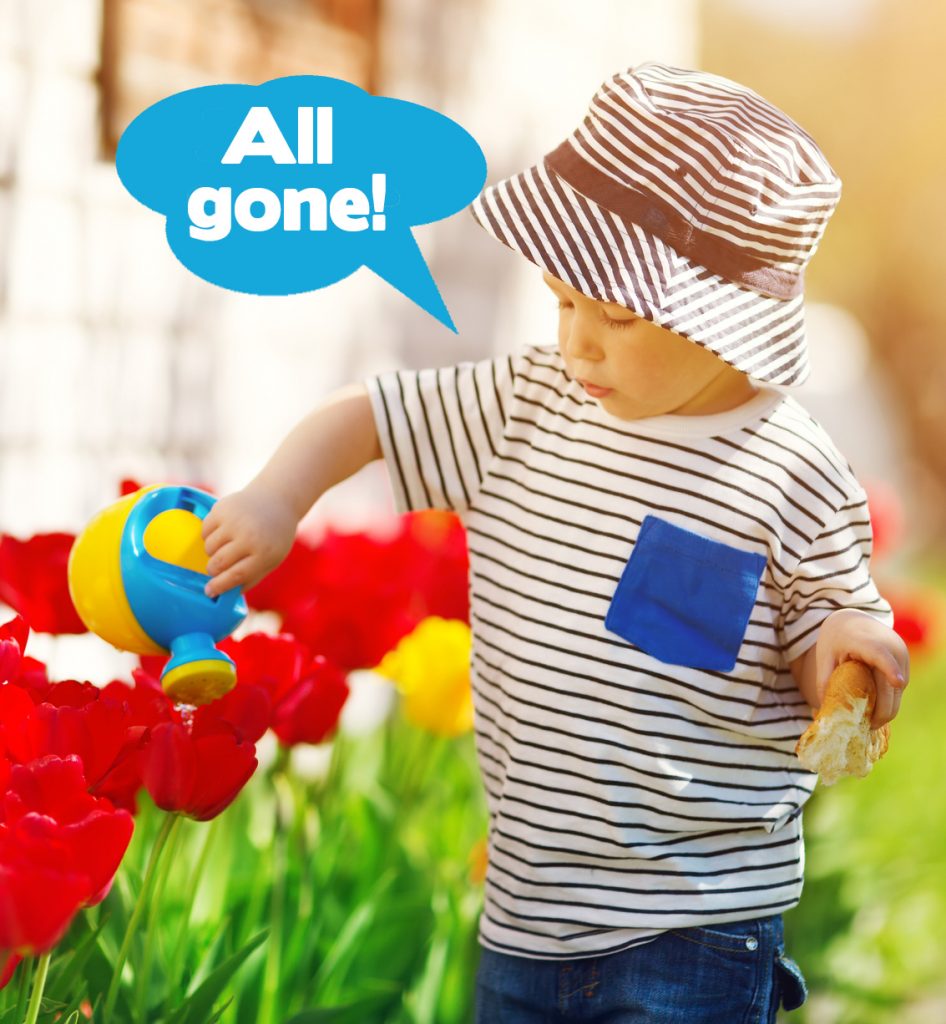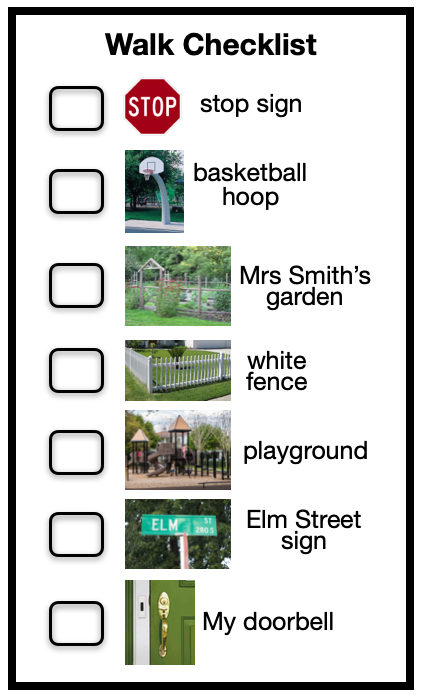Summertime means summer toys! Many outdoor activities are open-ended, so it can be challenging for our children to know how long to engage in them. Some children may rush quickly between these activities, while others may become stuck in just one for a long time. To make outdoor play most engaging for your child, consider using simple structure to make the concept of “finished” very clear.
| Sidewalk Chalk – Option 1: Place several pieces of chalk on a tray. Show your child how to doodle (lines, shapes, letters, numbers, pictures!) with one piece of chalk, then place it in a “finished” bucket. Encourage your child to doodle with another color of chalk and then place it in the “finished” bucket. Your child will learn he/she is all done when all the colors have moved from the tray to the bucket. |
 |
| Sidewalk Chalk – Option 2: Make a checklist of items for your child to doodle, such as a list of shapes, colors, or animals. The list can be written words or simple doodles for the child to copy. Show your child how to check off the first item after creating it with chalk. Your child will know he/she is finished when every item on the list is checked. |
 |
Swings – Option 1: Sing familiar songs as you push your child on a swing. Choose one song that you consistently sing last, to help your child understand that swinging is coming to an end. |
| Swings – Option 2: Challenge your child to count to a certain number on the swing. When he/she reaches that number, he/she will know swinging is finished. |
| Taking a Walk – Option 1: Fill a clear watering can or bottle with water. As you take a walk, encourage your child to sprinkle the water on trees, bushes, and flowers that you pass. When the watering can is empty, it is time to finish the walk and walk back to your starting point or house. Another option is to take a walk to a garden where the child will water and then walk back home. |
 |
 |
Taking a Walk – Option 2: Make a checklist of items (pictures or words) that your child will see/point to on a walk. Show your child how to check off the first item (or turn over the picture) after finding it. The last item on the list can be something back at your house, like your doorbell or your mailbox. Your child will know the walk is over when the items have all been checked or the pictures turned over. For some children, taking pictures of the items on the list is more engaging. |
Helpful Hints:
- If your child is hesitant to get started with one of these activities, think about incorporating a special interest.For example, if your child loves outer space, consider adding “planet” to his/her list of items to draw in chalk. If he/she loves sea animals, consider singing “Baby Shark” to get started on the swing.
- Sometimes the trickiest part of playing outdoors is having to come back inside.When the transition back inside feels unexpected, it can lead to frustration or tears. Think ahead about how you will help your child anticipate this transition. A visual countdown or timer can be really useful for this! (See TEACCH Tip #4!)
- Sometimes it is only necessary to introduce the finished routine when you are ready to transition away from an activity.If your child is enjoying an activity and you have the time, you do not have to start the finished routine (song, counting, etc) when it is nearing the time to finish and transition away from the activity.
In times of uncertainty, everyone benefits from predictability!



